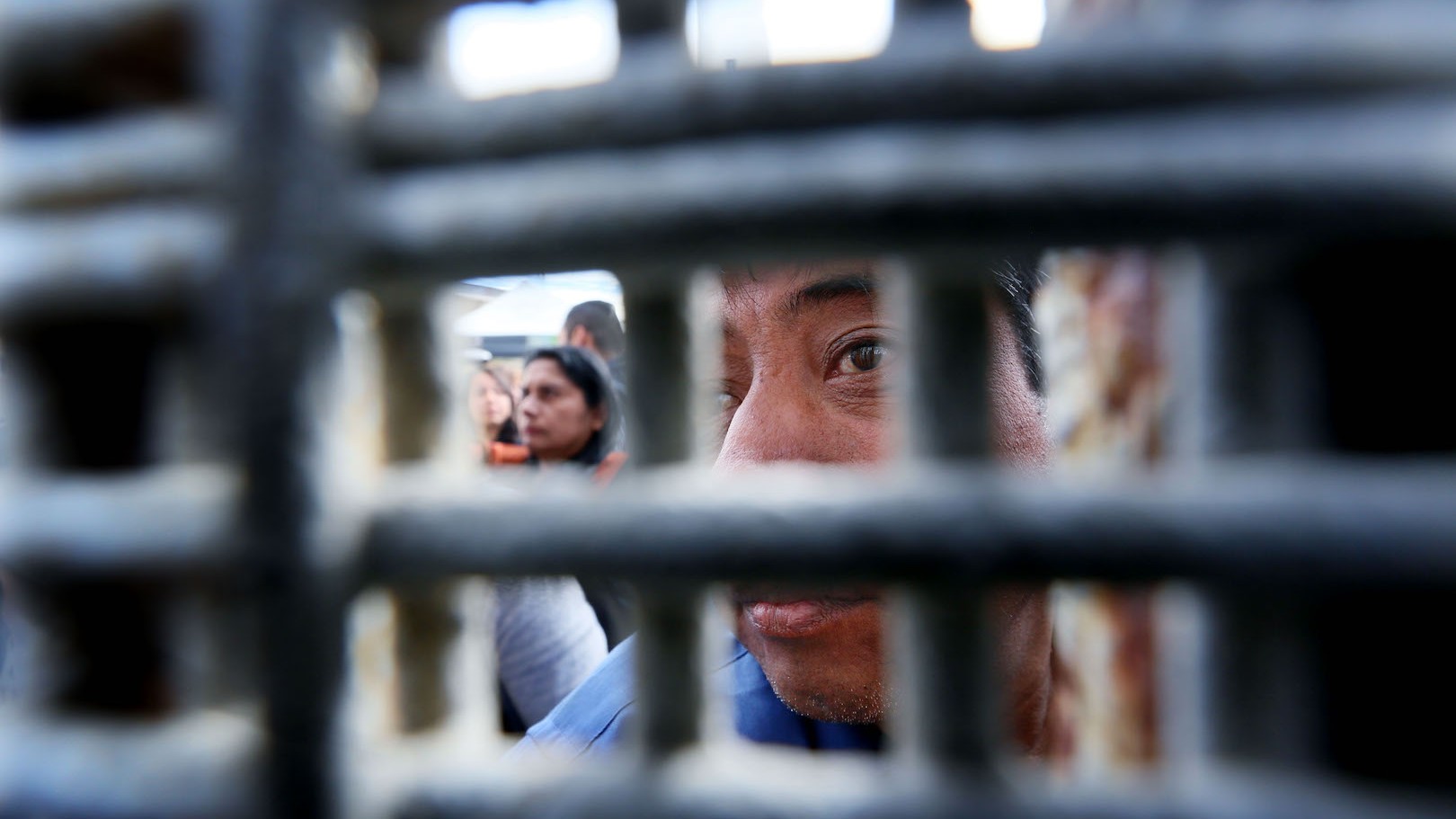In recent months, migrants from Central America, Haiti, and even African nations have piled up at the US southern border, waiting weeks in makeshift shelters for immigration agents to take their asylum requests, since agents say they're overloaded with cases."There definitely is a crisis on the border just with the current backlog of asylum seekers… Parts of Tijuana, Mexico, look like Port-au-Prince," said San Diego–based immigration attorney Andrew Nietor. "Now people wait there about three or four weeks, and Tijuana is not of the economy or infrastructure to handle this. It's really at the breaking point."But now the US Department of Homeland Security plans to totally overwhelm its southern neighbor with migrants—by deporting people who have entered the States immediately to Mexico, where they must undergo remote immigration proceedings. The new policy was announced by DHS in a memo Tuesday detailing how the agency will enforce President Donald Trump's strict immigration policies. Planned measures include targeting a wider swath of undocumented immigrants, expanding the Border Patrol, publicly criticizing "sanctuary cities," and prosecuting parents who send their unaccompanied kids across the border. But the most startling change might be the practice of deporting migrants to Mexico without a hearing, after which it might take years to complete their cases."They're going to be particularly vulnerable because these are going to be individuals not from Mexico, so they'll spend years in tent cities throughout the border region in a country that has not accepted them," Nietor told me. "They'll be unable to support themselves and easily victimized." Under current US practice, individuals remain in the States throughout their proceedings, often receiving support from relatives already in the country.Watch this VICE News report on asylum seekers being turned away illegally at the US border: Most of the individuals held at the border will likely be Central Americans who have fled Honduras, Guatemala, and El Salvador en masse in the past several years to escape record gang violence and to seek asylum in the US. But the Central American gangs and criminal networks extend throughout Mexico, putting deported migrants at high risk as they wait for their cases to progress—potentially, they might even hire smugglers to transport them back across the border."I'm sure the groups of human-trafficking organizations will be able to benefit from this because they can go to these areas and entice desperate people to find ways into the United States," Nietor continued.Meanwhile, tensions would heat up in Mexican border towns, as unprepared as Tijuana is to handle the swell of temporary residents."This runs the risk of placing a strain on communities in Mexico and on the people themselves. If they wanted to seek asylum in the US, it forces them to spend four to five years in a country they didn't ever intend to go to," Faye Hipsman, a policy analyst with the Migration Policy Institute, told me. "Asylum seekers in general have already been subject to persecution, and there is doubt about whether Mexico can protect them."Under the policy, migrants must undergo immigration proceedings via video teleconference with judges in the US. Hipsman and other immigration advocates told me that this will make it virtually impossible for them to present their cases."How will someone access an attorney or understand what's happening to them or the legal process they're in?" asked Katharina Obser, a senior program officer for migrant justice at the Women Refugee Commission. "These are really basic questions with no answer. We're already so concerned about how individuals are treated and screened at the border, and that people who express fear aren't referred to proper channels. Turning those individuals back to processing in Mexico augments those concerns."Some details of the DHS's new preemptive deportation policy are yet to emerge. The agency has not specified whether it would pay Mexico to detain the migrants in waiting, or whether it would let them fend for themselves as they do now in Tijuana. The agency only explained in a Q & A Tuesday that it would deport people "to the extent appropriate and reasonably practicable" and would "work with the countries involved to ensure proper coordination on the safe and humane return of their nationals."But the plan would in large part require Mexico's cooperation—and Mexican officials already have called the policy "hostile" and "unacceptable.""I want to say clearly and emphatically that the government of Mexico and the Mexican people do not have to accept provisions that one government unilaterally wants to impose on the other," Mexican foreign minister Luis Videgaray told Reuters Wednesday morning as he prepared for a tense meeting with Trump."We will not accept it, because there's no reason why we should, and because it is not in the interests of Mexico," Videgaray said of the deportations to Mexico.Christopher Wilson, deputy director of the Wilson Center's Mexico Institute, said the US could legally return migrants to the contiguous country from which they arrived, but he could not imagine Mexico agreeing to be the "waiting room for the US immigration system.""The US can ultimately take people to the border as allowed under US law and put them back on the bridge back to Mexico, but Mexico does not have to accept those who are deported who are not Mexican citizens," Wilson told me. "We certainly get to a difficult point at which neither country is really accepting those people, but I don't know if the US will is to that point," he said, predicting the US would back off.But with Mexico's recent quiet efforts to aid the US in enforcement, the country could end up participating more than expected, warned Amy Fisher, policy director for Refugee and Immigration Center for Education and Legal Services. In the past few years, Mexico has accepted funds from the US government to deport hundreds of thousands of Central Americans before they arrive at the US border, and agents in Tijuana have accepted migrants returned from the US."We've already seen collusion between US Border Patrol and Mexican officials at the border, so we know that is happening—maybe not in an official capacity, but it's happening," Fisher told me.Fisher was alarmed at the implications of the preemptive deportations."There's a huge piece missing that acknowledges the fact that the majority of people coming to the border are in fact asylum seekers seeking safety," she continued. "We also know how horrible the conditions are for detention centers already in the US—and if we set up additional detention centers outside the US, accountability and conditions, however bad they are now, would be even worse in Mexico."Follow Meredith Hoffman on Twitter.
Most of the individuals held at the border will likely be Central Americans who have fled Honduras, Guatemala, and El Salvador en masse in the past several years to escape record gang violence and to seek asylum in the US. But the Central American gangs and criminal networks extend throughout Mexico, putting deported migrants at high risk as they wait for their cases to progress—potentially, they might even hire smugglers to transport them back across the border."I'm sure the groups of human-trafficking organizations will be able to benefit from this because they can go to these areas and entice desperate people to find ways into the United States," Nietor continued.Meanwhile, tensions would heat up in Mexican border towns, as unprepared as Tijuana is to handle the swell of temporary residents."This runs the risk of placing a strain on communities in Mexico and on the people themselves. If they wanted to seek asylum in the US, it forces them to spend four to five years in a country they didn't ever intend to go to," Faye Hipsman, a policy analyst with the Migration Policy Institute, told me. "Asylum seekers in general have already been subject to persecution, and there is doubt about whether Mexico can protect them."Under the policy, migrants must undergo immigration proceedings via video teleconference with judges in the US. Hipsman and other immigration advocates told me that this will make it virtually impossible for them to present their cases."How will someone access an attorney or understand what's happening to them or the legal process they're in?" asked Katharina Obser, a senior program officer for migrant justice at the Women Refugee Commission. "These are really basic questions with no answer. We're already so concerned about how individuals are treated and screened at the border, and that people who express fear aren't referred to proper channels. Turning those individuals back to processing in Mexico augments those concerns."Some details of the DHS's new preemptive deportation policy are yet to emerge. The agency has not specified whether it would pay Mexico to detain the migrants in waiting, or whether it would let them fend for themselves as they do now in Tijuana. The agency only explained in a Q & A Tuesday that it would deport people "to the extent appropriate and reasonably practicable" and would "work with the countries involved to ensure proper coordination on the safe and humane return of their nationals."But the plan would in large part require Mexico's cooperation—and Mexican officials already have called the policy "hostile" and "unacceptable.""I want to say clearly and emphatically that the government of Mexico and the Mexican people do not have to accept provisions that one government unilaterally wants to impose on the other," Mexican foreign minister Luis Videgaray told Reuters Wednesday morning as he prepared for a tense meeting with Trump."We will not accept it, because there's no reason why we should, and because it is not in the interests of Mexico," Videgaray said of the deportations to Mexico.Christopher Wilson, deputy director of the Wilson Center's Mexico Institute, said the US could legally return migrants to the contiguous country from which they arrived, but he could not imagine Mexico agreeing to be the "waiting room for the US immigration system.""The US can ultimately take people to the border as allowed under US law and put them back on the bridge back to Mexico, but Mexico does not have to accept those who are deported who are not Mexican citizens," Wilson told me. "We certainly get to a difficult point at which neither country is really accepting those people, but I don't know if the US will is to that point," he said, predicting the US would back off.But with Mexico's recent quiet efforts to aid the US in enforcement, the country could end up participating more than expected, warned Amy Fisher, policy director for Refugee and Immigration Center for Education and Legal Services. In the past few years, Mexico has accepted funds from the US government to deport hundreds of thousands of Central Americans before they arrive at the US border, and agents in Tijuana have accepted migrants returned from the US."We've already seen collusion between US Border Patrol and Mexican officials at the border, so we know that is happening—maybe not in an official capacity, but it's happening," Fisher told me.Fisher was alarmed at the implications of the preemptive deportations."There's a huge piece missing that acknowledges the fact that the majority of people coming to the border are in fact asylum seekers seeking safety," she continued. "We also know how horrible the conditions are for detention centers already in the US—and if we set up additional detention centers outside the US, accountability and conditions, however bad they are now, would be even worse in Mexico."Follow Meredith Hoffman on Twitter.
Advertisement

Advertisement
Advertisement
Advertisement
